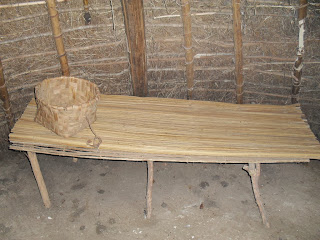THE VILLAGE MUSEUM.
The museum is located 8 km from the city center, along Ali Hassan Mwinyi/ the new Bagamoyo Road, adjacent to Lapf Millenium Tower. The village museum was set up in 1966 to demonstrate and preserve cultures of Tanzania’s ethic groups. The museum currently displays 22 homesteads of different groups across the country. All are authentic homes, built and maintained using local skills from indigenous groups. The village museum provides an important historical record of how different groups of people lived in Tanzania rural setting until the recent past.
Village mission,
It intends to build a peaceful society with strong sense of value and pride to its heritage and which is dynamic and traditional in its use, access, and conservation
Mission statement
The village museum is a center open to all which enables communities to express, appreciate, enjoy and promote our heritage and social development through interactive educational and recreational programmes by involving the community.
What to SEE
Ø Come and experience the unique culture and traditions of Tanzania’s many and varied ethic groups.
Ø The village museum is situated in a large open-air site with wide variety of trees giving a natural shade as you wonder around the numerous authentic dwellings, which give the visitors a taste of how different ethnic groups lived generations ago.
Ø The museum had plenty of species of plant such as sleeping grasses [kifauongo] which tend to fold up its leaves when touched by anything.
Fipa people are ethinic and linguistic group based in the Sumbawanga rural and Nkasi districts of Rukwa region in southwestern Tanzania speaking the fipa and Mambwe languages. These bantu speaking people inhabit the Ufipa plateau between lake Tanganyika and Rukwa. The milanzi [central chiefdom] was headed by a dynasty of ironsmiths. But the Twa [immigrants] possibly Tutsi from north dominated the Ufipa plateau by force and cunning.
The house of fipa is made up of clay soil with standing stick attached to the soil. From the bottom of the house there is a simple foundation which gives the strength of the house. Its roof is covered by dry grasses which are attached by the long sticks, the roof of the fipa’s house is holded by one strong stick at the center and a rope hold them tightly.
Within fipa’s house there are two beds where by one bed is made up of short and long sticks at the top it is covered by a mat and parents use to sleep on it while the other bed is found on the floor where by children sleep there. Various objects are inside the house of fipa such as grindstone, horn and container used to store medicine.
Outside the fipa’s house there is a stone used to wash legs in front of the bathroom and their bathroom is made up of dry grasses. Also fathers and their sons have the resting place.
People of fipa engaged themselves in making iron also they used fish traps to catch fishes. They constructed long furnaces on the ground and built it, using the clay soil which retain temperature for long time.
Opening time
Every day from 9.30 to 18.00 HRS.
Entrance fees
Tanzanians adult Tsh 1500
Students Tsh 500
Foreigner adult US$ 5
Foreigner student US$ 2
Foreigner children US$ 1
Watching traditional dances
Adults US$ 2
Students US$ 1
THE MUSEUM IS OPEN FOR ALL OF YOU!!!!!!!!!!!!!!!!!!!!!!!










Hakuna maoni:
Chapisha Maoni